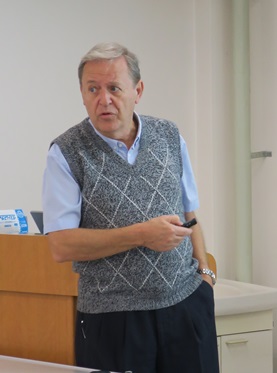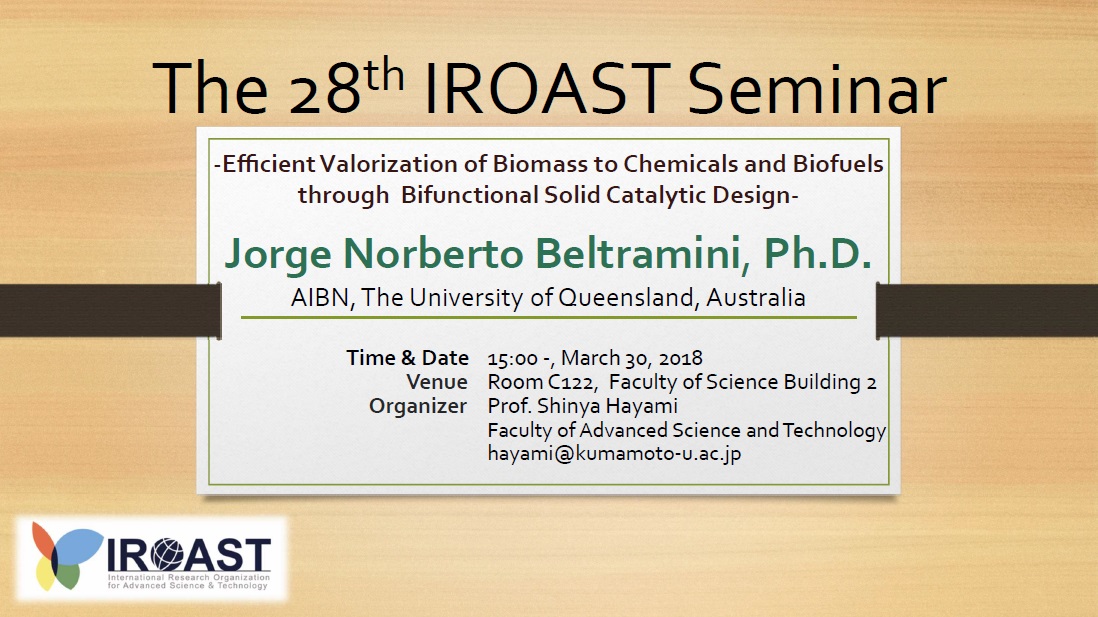- HOME
- SYMPOSIUM & SEMINAR
- March 30(Fri.), 2018: 28th IROAST Seminar-Efficient Valorization of Biomass to Chemicals and Biofuels through Bifunctional Solid Catalytic Design
SYMPOSIUM & SEMINAR
28th IROAST Seminar-Efficient Valorization of Biomass to Chemicals and Biofuels through Bifunctional Solid Catalytic Design-held on March 30, 2018
IROAST Visiting Professor Jorge Beltramini from the Clean Energy and Green Chemistry Group, the Nanomaterials Centre - AIBN at The University of Queensland, Australia, gave a talk at the 28th IROAST Seminar. Professor Shinya Hayami from the Faculty of Advanced Science and Technology organized the seminar. After Professor Hayami's introduction, Professor Beltramini talked about his research into "Efficient Valorization of Biomass to Chemicals and Biofuels through Bifunctional Solid Catalytic Design." Some 40 students and faculty members attended the seminar.
 |
 |
March 30(Fri.), 2018: 28th IROAST Seminar-Efficient Valorization of Biomass to Chemicals and Biofuels through
Bifunctional Solid Catalytic Design
IROAST will hold the 28th IROAST Seminar as below. Everyone is welcome. We hope to see you at the seminar.

Abstract
Nanostructured functional materials are used for the critical design of heterogeneous catalysts to deliver products from multiple step reactions that are required for energy and environmental applications. An emerging trend is to integrate catalytic transformations, reaction engineering and product separations into a single operation wherein catalyst design is considered as the key approach to develop efficient, low energy and environmentally friendly reaction systems. Bifunctional solid catalysts open a door for carrying out domino/cascade and tandem/sequential type reactions in a single reactor, for which the number of isolation or purification steps can be decreased or eliminated so the removal of unwanted products becomes unnecessary. This presentation discuss bifunctional materials used in a single pot conversion of biomass into related chemicals and biofuels. Emphasis is placed on the assessment of the bifunctionality of catalytic materials, including Bronsted-Lewis acid, acid-base, and metal particles combinations. Plausible reaction mechanisms for key pathways are shown. Relevant auxiliaries to boost catalytic activity and product selectivity, such as reaction media, heating modes and morphological properties of the catalytic materials are discussed. Use of appropriate bifunctional catalytic materials provides many opportunities for design of highly efficient reaction systems and simplified processing for producing biofuels and chemicals from lignocellulosic biomass.

